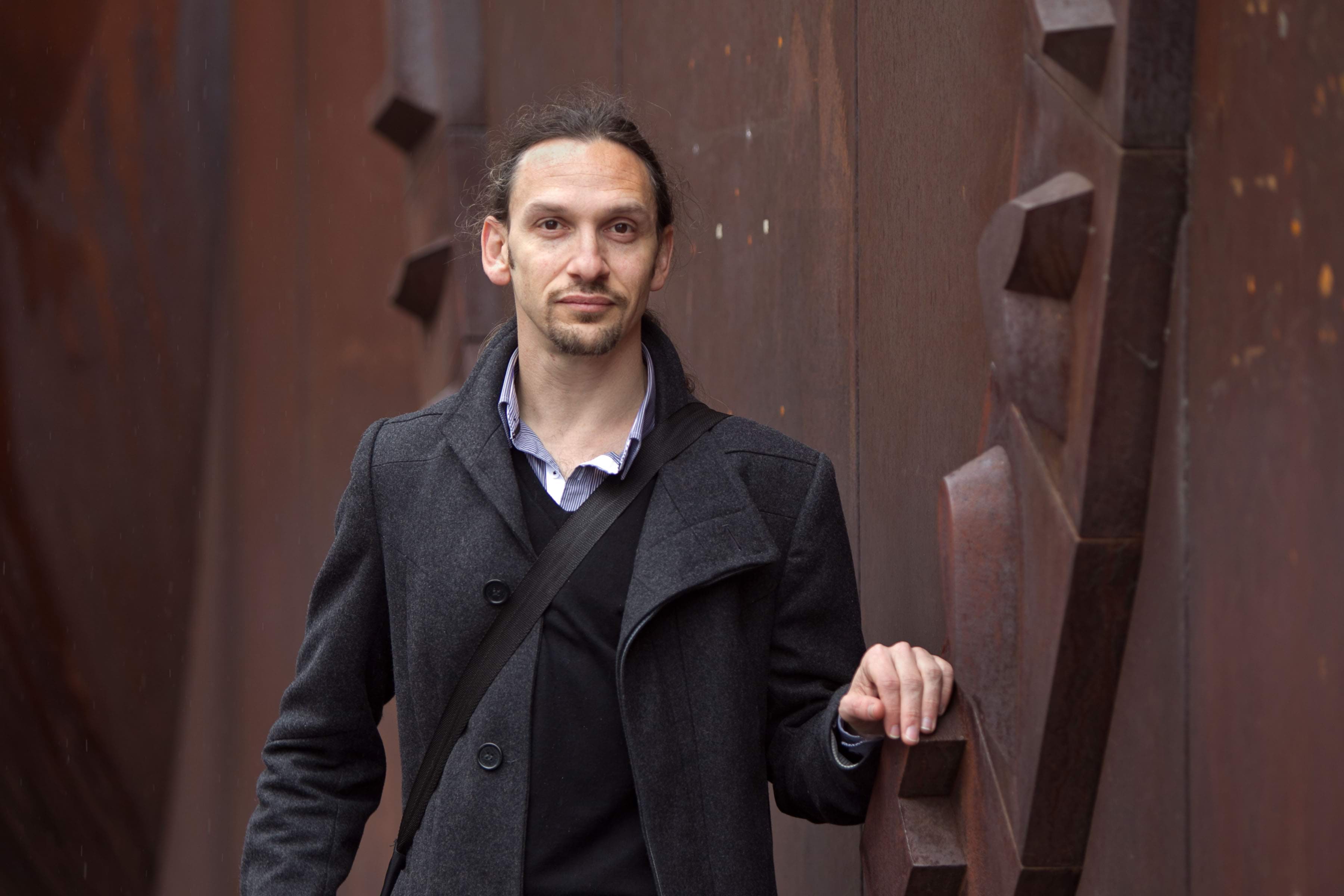It is not possible to identify with certainty the first Indigenous Australian architect in Victoria. The earliest known Indigenous person engaged in a related field was Sydney-based Douglas Grant (1886-1951), who was a mechanical draftsman by 1916 when he enlisted to fight with the Australian Imperial Forces in the First World War. In 1930, Grant applied to be the architect for a series of cottages for Indigenous people at La Perouse, but the bid was apparently unsuccessful, and he remained a draftsman for the remainder of his career.
One of the earliest known Indigenous architects to register in Victoria is Jefa Greenaway, a Wailwan/Kamilaroi man originally from NSW, although it is likely others exist, coming to light as they uncover or embrace their Indigenous heritage.
Greenaway was immersed in design culture from a young age, his mother being a graphic designer and his grandfather a draftsman. He completed a diploma in architectural drafting at Box Hill TAFE 1991-93, before enrolling in a Bachelor of Arts (BA) at Latrobe University, majoring in politics, in 1993. He soon transferred to the University of Melbourne to study architecture, concurrently enrolling in a BA at Melbourne to continue his studies in politics. He completed a Bachelor of Planning & Design (Architecture) in 1997 and a Bachelor of Architecture in 1999, graduating with honours. From 1992, Greenaway worked as an architectural assistant in a series of firms alongside his studies, including Stanistreet & Associates (1992-93), George Petridis Architects (1996-97) and Petridis Cornetta Architects (1997-98). He then worked for Gray MacLean & Co (now HBO+EMTB) (1998-2000), simultaneously founding Cadro Design with partner Cathy Drosinos. He worked as a project architect for Mark Richards Architects (2000-03), registering as an architect in Victoria in 2003. He founded Greenaway Lowe (also with Cathy Drosinos-Greenaway) that year, becoming Greenaway Architects in 2010. He also worked with SJB Architects as a project architect 2010-11.
Along with Reuben Berg, he founded the not-for-profit advocacy group Indigenous Architecture Victoria (IAV) in 2010, which became Indigenous Architecture + Design Victoria in 2014 (IADV). Greenaway chaired IAV/IADV from 2011-2022, during which time he co-authored the multi-award-winning International Indigenous Design Charter - Protocols for sharing Indigenous knowledge in professional design practice (2018). He has sat on numerous award and competition juries across architecture, design and public art; held multiple advisory board positions related to government, higher education and the corporate world; convened exhibitions, installations and conferences; delivered frequent public presentations; and written key publications on Indigenous knowledges. He has long combined practice with teaching, including positions at the University of Melbourne (2017-23), and currently holds honorary or adjunct roles at Deakin, Monash and Swinburne universities.
Greenaway has completed a series of prominent projects, among them the original fit-out for the Koorie Heritage Trust (2015) (IADV with Lyons), the urban design for Ngarara Place, RMIT (2016), the award-winning New Student Precinct at the University of Melbourne (2022) (Lyons, Koning Eizenberg, NMBW, EAT, Aspect, Glas and Greenaway Architects), and the second stage fit-out for the Koorie Heritage Trust (2023) (Lyons, Architecture Associates and Greenaway Architects) that won the Dimity Reed Melbourne Prize in 2024. He has had three projects at the Venice Architecture Biennale, exhibiting in 2018, 2021 and 2023. He was inducted into the Design Institute of Australia Hall of Fame in 2020 and in 2023 named a Luminary at the INDE Awards, that recognises outstanding individuals who have made an indelible contribution in architecture and design to the community.
Greenaway has been part of a vanguard of Indigenous architects and practitioners that have risen to prominence across Australia since the early 1990s. A new generation of First Nations designers and architects now establishing themselves in practice and required competencies on Indigenous understanding and ways of knowing for accredited degrees in architecture will further embed consideration and acknowledgement of Australia’s traditional owners and their care for Country in our built environment.
Prepared by Professor Julie Willis of the University of Melbourne
Updated


